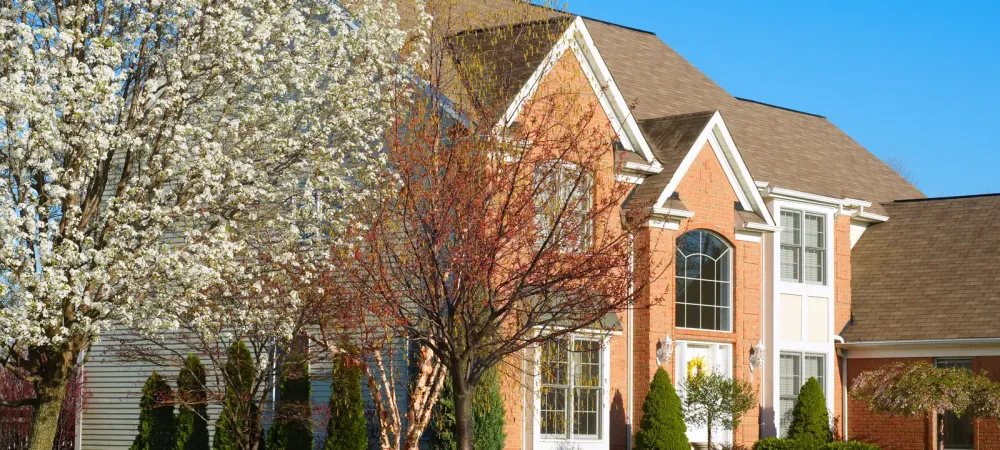Why Humidity Control Is Key to Pest Prevention in North Carolina

The verdant landscapes and vibrant communities of North Carolina, while offering a fantastic quality of life, come hand-in-hand with a significant environmental factor: our characteristically humid climate. While this moisture-rich air nourishes our beautiful flora, it simultaneously creates an often-overlooked battleground within the walls of our homes, fostering an environment where unwelcome pests not only survive but actively thrive. Understanding the deep and intricate connection between elevated humidity levels and the proliferation of pest infestations is the absolute first and most crucial step in seizing control of your home environment and establishing a robust defense against these unwanted invaders.
Unpacking the Pervasive Humidity-Pest Nexus
Our extended periods of high humidity, a hallmark of the North Carolina climate, act as a silent enabler for a vast array of common household pests. From the shadowy recesses of our often-neglected basements and crawl spaces to the seemingly innocuous cracks and crevices within our walls, excess moisture establishes a veritable Shangri-La for creatures that can inflict significant damage on our cherished properties, contaminate our precious food supplies, and even pose tangible risks to the health and well-being of our families.
How Humidity Actively Attracts and Sustains Pest Infestations
Why are pests so relentlessly drawn to environments characterized by high humidity? The answer lies deep within their fundamental biological requirements and survival mechanisms. This includes:
- The Primacy of Hydration: Just like every other living organism on this planet, pests require a consistent and reliable source of water to sustain their life functions. Elevated humidity levels essentially provide a readily accessible and often ubiquitous source of this essential moisture, negating the need for pests to actively seek out water sources, making survival significantly easier.
- The Flourishing of Breeding Grounds: Many of the most common household pests, including the resilient cockroach and the microscopic yet numerous mold mite, exhibit a strong preference for damp conditions, which are absolutely critical for their successful reproduction and the subsequent survival of their vulnerable offspring. High humidity can dramatically accelerate their reproductive cycles, leading to exponential population growth within a remarkably short timeframe.
- The Nourishment of Food Sources: Excess moisture frequently leads to the unwelcome proliferation of mold and mildew within our homes. These fungal growths, often appearing as unsightly stains and emitting musty odors, serve as a primary and abundant food source for a variety of pests, most notably mold mites and certain species of beetles that have adapted to exploit these damp ecosystems. Furthermore, persistently damp wood becomes highly susceptible to fungal decay, effectively laying out an irresistible all-you-can-eat buffet for destructive wood-boring insects such as termites.
- The Compromising of Structural Integrity: High humidity can insidiously weaken the very structural integrity of our homes, rendering them more vulnerable to pest intrusion. For instance, wood that remains consistently damp becomes softer and significantly easier for determined termites to tunnel through, potentially leading to costly and extensive structural damage that can compromise the safety and value of your property.
Common Moisture-Related Pest Issues: The Costs of Neglecting Humidity Control
The detrimental link between unchecked humidity and thriving pest populations manifests in several common and often financially burdensome issues for homeowners throughout North Carolina. This may include:
- Wood Decay and the Termite Threat: Excess moisture that lingers in crawl spaces, basements, and around plumbing leaks saturates wooden structural components, creating an absolutely ideal breeding ground for wood-decaying fungi and the subsequent softening of the wood fibers. This softened, decaying wood becomes an irresistible target for subterranean termites, which voraciously consume cellulose and can inflict devastating structural damage to your home, often going undetected until significant harm has already occurred.
- Accelerated Pest Reproduction: The consistently high humidity levels prevalent in North Carolina provide the perfect environmental catalyst for the rapid reproduction of numerous common household pests. Cockroaches, notorious for their resilience and potential to spread disease, rely heavily on moisture for survival, and their populations can multiply exponentially in damp environments. Similarly, mold mites, though tiny, can become a significant nuisance in areas with elevated humidity, such as bathrooms, kitchens, and poorly ventilated storage spaces, often triggering allergic reactions in sensitive individuals.
- Attracting Secondary Pests: The unwelcome growth of mold and mildew, a direct consequence of excessive indoor humidity, not only degrades indoor air quality and creates unpleasant odors but also actively attracts specific types of pests that feed directly on these fungi. Mold mites are a prime example of such pests, thriving in the damp conditions that promote mold growth. Addressing the underlying humidity issue is therefore crucial for eliminating both the mold and the pests it attracts.
Robust Humidity Management Strategies for Your North Carolina Home
Fortunately, North Carolina homeowners have access to a range of effective and proactive strategies designed to manage indoor humidity levels and thereby create a significantly less hospitable environment for a wide spectrum of pests. This includes:
- Dehumidifier in Basements and Crawl Spaces: Basements and crawl spaces, often situated below ground level, are particularly susceptible to elevated humidity levels. Investing in a high-quality dehumidifier specifically sized for the area can dramatically reduce moisture content in these critical zones, making them far less attractive to pests and actively inhibiting the growth of damaging mold and mildew. Remember to regularly monitor and empty the dehumidifier's collection tray to ensure optimal performance.
- Strategic Ventilation in Attics, Bathrooms, and Kitchens: Ensuring proper and consistent ventilation is absolutely vital for effectively removing moisture-laden air from key areas within your home. Verify that your attic has adequate cross-ventilation through a combination of soffit vents (intake) and ridge vents or gable vents (exhaust). Utilize exhaust fans in bathrooms and kitchens diligently during and for a significant period after showering, bathing, and cooking to actively expel excess humidity directly to the outdoors. Consider installing timers on exhaust fans to ensure they run for an adequate duration.
- Addressing Leaks and Water Intrusion at the Source: Implement a schedule of regular inspections throughout your home to identify and promptly address any signs of water leaks, whether they originate from plumbing fixtures, roof vulnerabilities, or foundation cracks. Even seemingly minor leaks can contribute significantly to elevated indoor humidity over time. Ensure proper grading and drainage around your home's foundation to effectively divert rainwater away from the structure. Regularly clean your gutters and downspouts to prevent water from backing up and potentially seeping into your home's walls or foundation.
- Vapor Barriers - Creating a Moisture Shield: In crawl spaces, consider the installation of a high-quality vapor barrier. This impermeable membrane effectively seals off the crawl space from the damp earth below, preventing significant amounts of moisture from evaporating into the air and contributing to high humidity levels within your home. When properly installed, a vapor barrier is a powerful tool in long-term humidity management.
Achieving Superior Pest Prevention and a Healthier, More Comfortable Home
Implementing effective humidity control measures in your North Carolina home yields significant and multifaceted benefits that extend far beyond mere pest prevention. This includes:
- A Tangible Reduction in Pest Infestations: By proactively creating a consistently drier indoor environment, you fundamentally alter the conditions that pests require to survive and reproduce. This makes your home significantly less attractive and hospitable to a wide array of unwelcome invaders, ranging from wood-destroying termites and disease-carrying cockroaches to irritating mold mites and nuisance ants that are often drawn to moisture sources.
- Enhanced Indoor Air Quality and Overall Comfort: Effectively controlling indoor humidity levels plays a crucial role in inhibiting the growth and proliferation of mold and mildew. These fungal growths release microscopic spores into the air, which can trigger allergic reactions, respiratory problems, and other health issues. Maintaining optimal humidity levels leads to demonstrably improved indoor air quality, creating a healthier, more comfortable, and more enjoyable living space for you and your entire family in North Carolina.
Take Decisive Action Towards a Drier & Healthier North Carolina Home
Don't allow the often-unseen threat of excessive humidity to create and sustain a thriving haven for pests within your North Carolina residence. One of the most impactful and long-term solutions for effectively managing moisture in vulnerable areas like crawl spaces and basements is through professional crawl space encapsulation. This specialized process involves creating a sealed and conditioned environment within the crawl space, effectively preventing the migration of moisture from the damp earth into your home's structure. By significantly reducing humidity, encapsulation inhibits mold and mildew growth, eliminates the conducive conditions that attract a wide range of pests (including termites, cockroaches, and rodents), and can even improve energy efficiency.
Take proactive and decisive control of your home's humidity and associated pest problems by reaching out to the local experts at Bug-N-A-Rug today for a comprehensive consultation on the numerous benefits of professional crawl space encapsulation! Contact us today.
Authoritative Source for Reference: NC State Extension: Mold/Moisture

